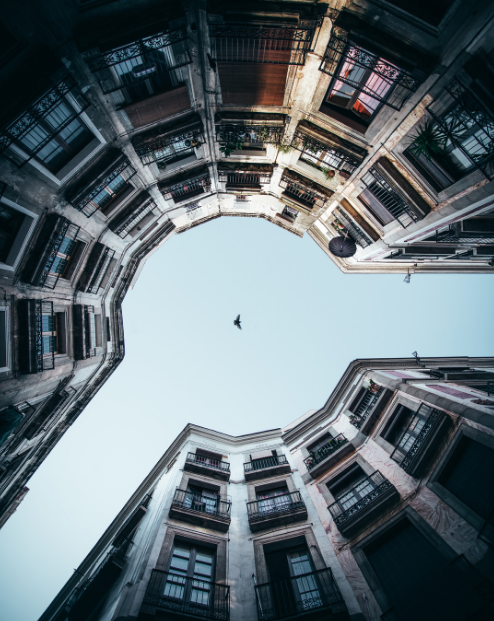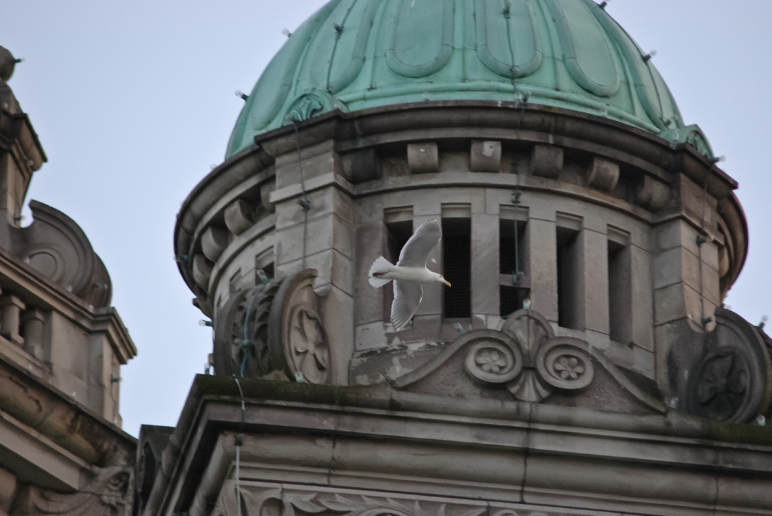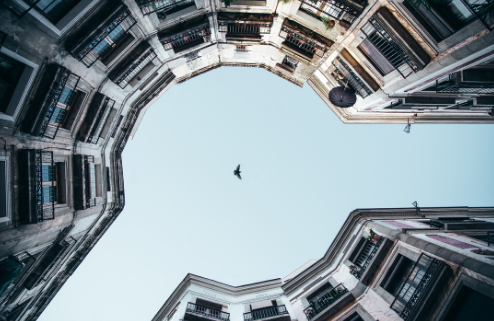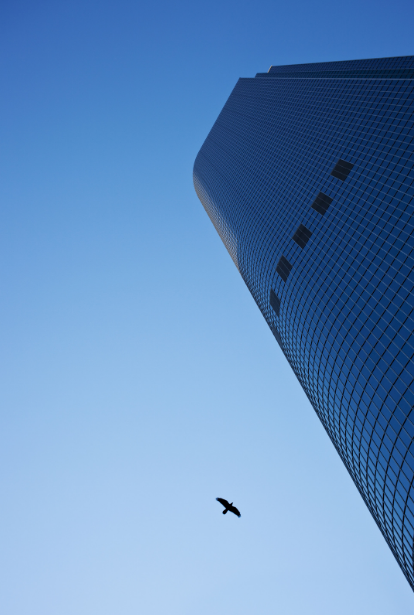Bird-Friendly Buildings
What factors go into designing bird-friendly buildings? As architects, we consider bird behavior and we design buildings to limit the potential hazards birds may encounter in the built environment. Our designs are not fool-proof, but they go a long way to protect birds from danger and potential collisions.
Birds and Buildings
Birds can brighten our day with colorful feathered displays, charming songs, and impressive winged formations. During annual migrations, we enjoy seeing and hearing from an amazing variety of birds flying through and briefly pausing in our area. Protecting local birds and enhancing the environment for migratory birds should be a priority.
Unfortunately, buildings and glass windows can pose a collision hazard for birds. Did you know that 1 billion birds are killed each year by flying into building windows? Unlike people, birds are not able to distinguish between the glass and open airspace. When birds look at the clear or reflective glass, they see the reflection of vegetation and the sky.
Birds do not perceive the glass as a solid surface.
During seasonal migrations when birds pass over big cities, they can be thrown off by bright lighting, and they may collide with buildings and especially building glass. Unfamiliar places add to the confusion and most bird collisions occur during migration season. This is not just a problem with big cities and high-rise buildings; birds also fly into the glass of homes and low-rise buildings.
Enhancing Bird Safety
What can architects, homeowners, and building managers do to minimize collisions? We can make existing and new buildings safer for birds. By integrating bird-friendly design ideas and products and by operating buildings to minimize nighttime light, we can protect and enhance the environment for our feathered friends.
Bird protection legislation such as the Bird-Safe Buildings Act has been backed by major architectural firms. Regulatory agencies encourage architects and building owners to design and operate their buildings with bird safety in mind. For example, the US Green Building Council offers LEED credits for bird collision deterrence to reduce bird injury and mortality.
There are many ways to help birds and some of the methods are actually quite simple and inexpensive to implement. Let’s take a look at some great options.
 3 Tips for Bird-Friendly Buildings
3 Tips for Bird-Friendly Buildings
- Mark Glass for Visibility
In order to make new buildings more visible to birds, designers can incorporate special bird-safe glass. This glass incorporates a UV coating that birds can see, but people can’t. Patterns can also be printed on or etched into the glass. Fritted glass is a good option because the pattern is visible to birds but subtle to people. Additionally, patterned or fritted glass helps with sun shading.
Guardian has developed glass with a UV coating that makes it visible to birds, yet it’s transparent to people. Arnold Glass offers Ornilux bird-protection glass which is coated with a patterned UV-reflective glaze. See how it’s made here.
In existing buildings, adding contrasting stickers may make glass more visible to birds. Various marking techniques, such as closely spaced markings, bird tape, painted designs, and one-way transparent films, can be effective when affixed to the exterior of the windows. Exterior shade systems can be added to existing buildings as well. For the most part, retrofit solutions are not as attractive as solutions that are originally built-in to the building.
2. Design Bird-Friendly Building Façades
In new buildings, architects can incorporate exterior building design devices that give birds the best chance of avoiding collisions. For example, windows can be shaded by overhangs or awnings to reduce glare and reflectivity. Windows can also be offset to reflect light downward. Devices such as external window screens and shutters can help birds to see the windows. Visual noise from balconies and other solid elements can help birds to locate (and avoid) buildings.
3. Adjust Building Lighting
Building owners and managers can shut off unnecessary outdoor lighting at night and utilize light motion sensors. Both strategies have the additional advantage of reduced operating costs and energy use.
Many cities have adopted the Lights Out program to enhance bird safety during seasonal migrations. This program encourages people to turn off exterior lighting during migration months so that birds can safely travel to their nesting and wintering areas.

We are currently working on a special project in a protected, natural environment. This project integrates innovative design ideas and products that respond to bird behavior and minimize the chances of bird collisions. By integrating these into our projects and including ways of minimizing nighttime light, we hope to significantly enhance the built environment for our feathered friends.




